In the early days of computing when there were only text based operating systems, the keyboard was the only input device required, and users typed in any commands to the system.
However, with the advent of the Graphical User Interface (GUI), the way programs operated and interacted with the user, changed radically, and the mouse became a necessity. And like almost any component of a computer system, the mouse is no different, coming in many shapes and flavors, each offering its own particular quirks and benefits.
[lwptoc]
What is a Computer Mouse?
A computer mouse is a hand-held pointing device that tracks the user’s hand initiated movement in two dimensions. The information is relayed to the computer system, which in turn displays a mouse pointer on the computer screen reflecting that movement.
It is used as a point and select device and conveys no other information other than position, and depending on the mouse, anything from one to several button clicks. Typically, the user moves the mouse pointer to an element on screen and clicks to select it.
The behavior of the mouse cursor in relation to mouse movement is intuitive and fairly standard regardless of the operating system, in that if the mouse is moved forward, back, left, or right, the mouse cursor will likewise move up, down, left, and right on the screen.
Most mice today come with two buttons, referred to as left and right, and a center scroll wheel which is also a third button. There are mice with more buttons, but the three button scroll mouse is the most common.
Mouse button functionality is fairly standard across most operating systems and applications, with (for right handed users) the left button typically being used to set the position of the cursor or to select the current element, and the right button to bring up a context menu relevant to the element over which the mouse cursor is located.
While the concept of a mouse may on the surface appear quite simple and straightforward, there are in fact quite a few types, differing in the way they communicate with the host system, in the way they operate, and in how suitable they are for certain applications.
One common factor with all mice is that they are designed to fit in a human hand, whether that means the hand rests on the mouse or grips the mouse. Usually, but not always, mice are created symmetrical so that the same mouse can be used by either right or left handed users.
How a Mouse Detects Motion
Mechanical or Optomechanical Mouse
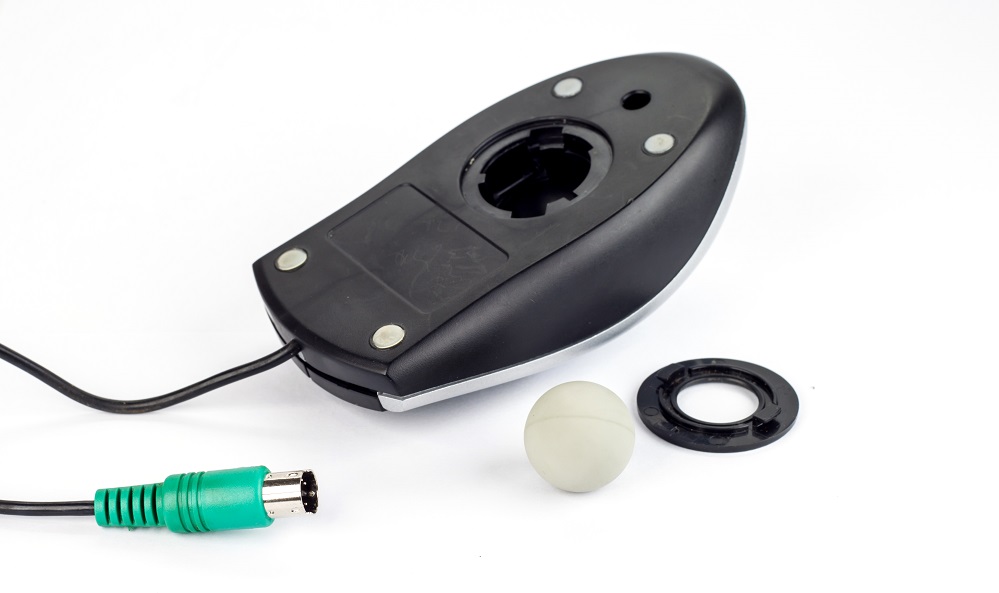
This is the older type of mouse, having now been replaced by the optical mouse. It has a ball (most commonly made of rubber) slightly protruding through a circular opening in the base of the mouse, so that as the mouse is dragged across a flat surface, the ball rotates accordingly.
The rotation of the ball directly affects the movement of two discs, which are positioned perpendicular to each other. One disc tracks forward / backward motion (y axis), and the other disc left / right motion (x axis).
Both discs have (typically) about 36 slots, and a pair of light emitting diodes (LEDs) on one side of the disc, facing a pair of light sensitive transistors directly across them on the other. As each disc rotates and a slot moves into and out of position between the LED and its transistor, the beam of light from the LED passes momentarily through the slot onto the transistor, and a pulse is generated.
The LED-transistor pairs are so spaced so that when a slot is directly between the first LED and its transistor, the second LED and transistor’s pulse is either transitioning from on to off, or off to on.
This phase difference between the two pulses is what determines the direction (e.g. left to right or right to left) the mouse is moving in. The frequency of the pulses indicates the speed of movement.
This type of mouse requires a uniform, flat surface (e.g. mouse pad) in order to work properly. It also suffers from dust, dirt, hair, and lint that collects on the ball or discs, and often requires cleaning.
Optical Mouse
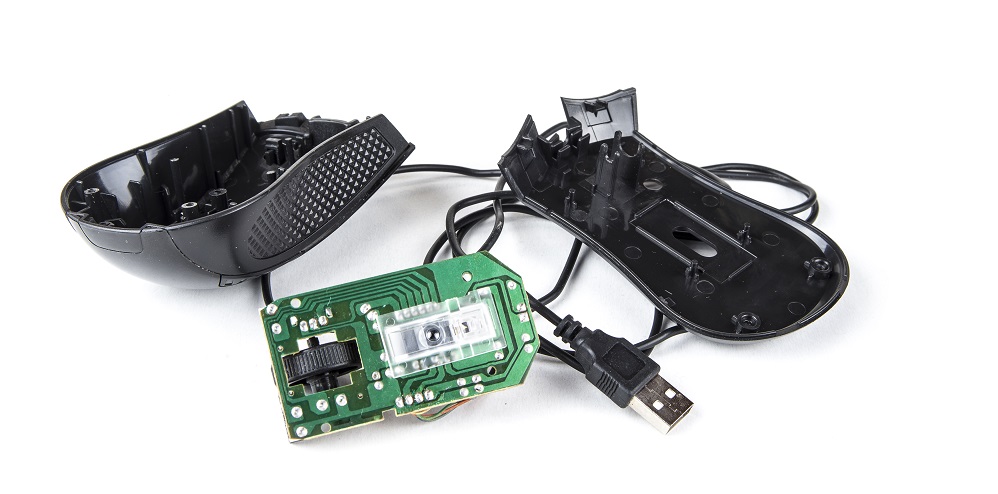
LED Optical Mouse
This is the most popular mouse in use today. Optical mice work by emitting light from a LED light source onto the surface the mouse is on. Typically, a red or infra-red LED is used because its light is less affected by other, surrounding light sources, although there are optical mice that do use other colors (e.g. blue LED).
The light is reflected back onto a CMOS sensor which captures thousands of images per second. A Digital Signal Processor (DSP) compares the images and detects the direction and amount of movement over successive images.
This type of mouse can work on just about any surface that is flat and smooth, except on very glossy or transparent surfaces. Some cheaper optical mice may also have trouble tracking fast movement.
Laser Optical Mouse
The laser optical mouse works in exactly the same way as the LED optical mouse, but instead of a red or infrared LED, uses an infrared laser diode light source. Compared to LED light sources, a laser diode light source allows for greater resolution of the images taken along with superior tracking, giving finer granularity in movement detection and hence, greater accuracy.
Unlike LED optical mice, laser optical mice are able to track on glossy and transparent surfaces, and in general offer much better performance.
How a Mouse Communicates With the Host
Wired
Regardless of whether a mouse is mechanical or optical, it needs to relay mouse movement and button click information to the host system. A wired mouse does so directly through a cable. While older mice used the PS/2 connector with a round 6-pin mini-DIN plug, today’s wired mice rely almost entirely on the USB connection.
Compared to wireless mice, a wired mouse tends to be more accurate and responsive, with low latency, making it ideally suited to applications requiring fine granular control, such as graphics editing and image manipulation, as well as gaming.
Wireless
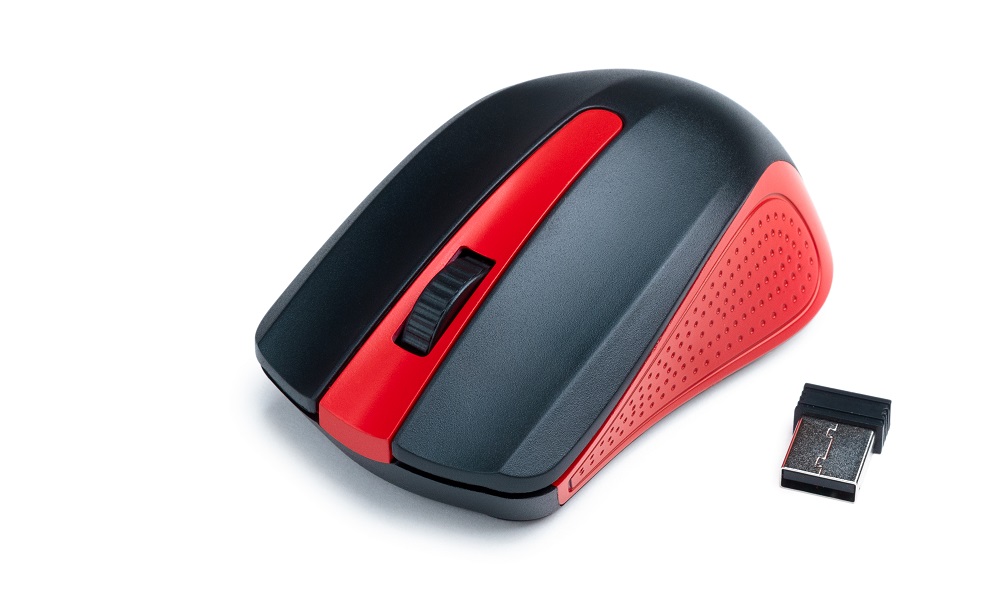
As the name suggests, this type of mouse has no cable or cord connecting it to the host system. Instead, the mouse transmits a radio frequency signal, typically over the 27Mhz band (which has become the industry standard), to a receiver (dongle) that plugs into the host system, usually through a USB port.
27 MHz allows for up to 3 computer users working no closer than 3 meters of each other, to operate interference free. The range of the mouse from the host system is typically no more than one to two meters.
Some manufacturers also use the 2.4GHz wireless network band which allows for a greater proliferation of users, typically as many as 78 users, each 10 meters apart. The range at this frequency is up to 10 meters.
Because any mouse movement and button click information is transmitted over the air, it involves some encoding and decoding, which results in this type of mouse not being as responsive as a wired mouse. However, for ordinary use, this is not discernable.
Compared to a wired mouse, a wireless mouse affords ease of movement and extended range (no cable to contend with).
Bluetooth
While the Bluetooth mouse connection is not as common, it is still readily available. It connects via the Bluetooth receiver found on most computers and laptops. If one is not present, there are Bluetooth dongles available that plug into the USB port.
Bluetooth Low Energy or BLE is the technology used for mice because of its low power consumption. It operates in the 2.4GHz band (specifically from 2.4 to 2.4835 GHz), dividing the spectrum into 40 channels with 2MHz channel spacing, of which 37 are used to carry data and 3 for advertising.
Advertising is the process by which a device broadcasts special messages containing information about itself, in order to be discovered. Connected Bluetooth devices monitor the frequency band, hopping channels in unison while dynamically avoiding any that experience interference.
It basically offers the same pros and cons over wired mice, as do wireless.
Other Types of Mice
We have seen how a mechanical mouse uses a rubber ball and an optical mouse uses a reflected light to track movement. But mice also come in a number of designs which may employ any of the wired or wireless, LED or laser technologies.
The typical optical mouse in use today, has the user’s hand resting on top of the mouse with typically a left and right mouse button, and a scroll wheel in between, which also acts as a third button.
However, many users who spend several hours at a computer each day, develop mouse related repetitive stress injuries, such as Carpal Tunnel Syndrome, Tenosynovitis, Tendonitis, Trigger Finger, Myofascial Pain Syndrome and Chronic Sprain and Strain.
The following are a few mouse alternatives that have primarily been designed to offer some relief from such injuries.
Trackball
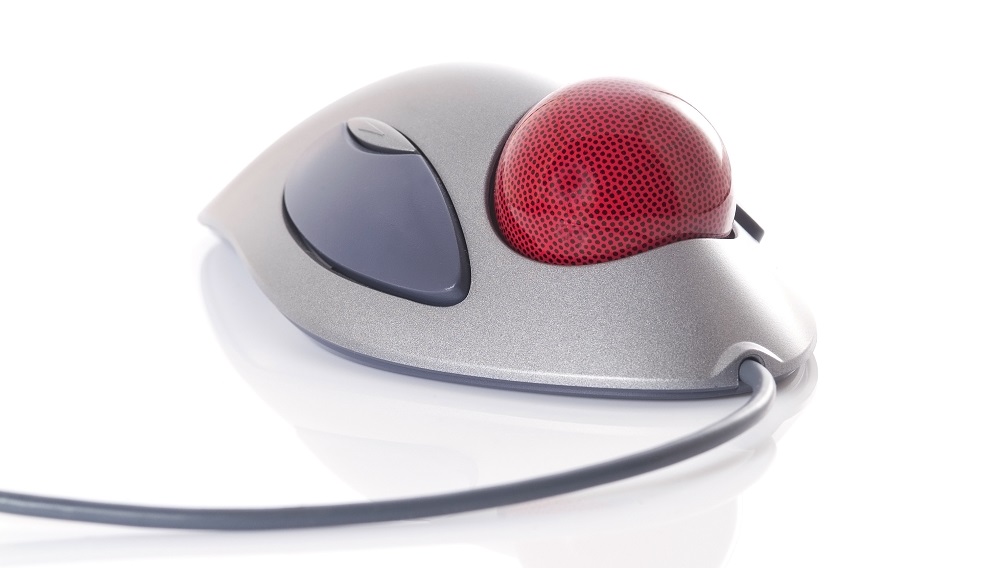
This is very similar to the mechanical mouse, in that it uses a ball (called a trackball) to detect motion. However, the trackball is not located on the underside of the mouse, but on top, and the user moves the trackball, usually with their thumb or index finger.
The advantage of this is that it requires less desk-space. But more importantly, the actual mouse does not move at all which causes less fatigue on the wrist and forearm, and is therefore considered more ergonomic. Overall, this results in fewer joint and muscle problems such as carpal tunnel, tendinitis, hand cramps, and wrist pains.
Trackball mice are not well suited to applications requiring fine precision, such as graphic editing, and certainly they are not suited to gaming. They are available in wired and wireless versions.
Vertical Mouse
The vertical mouse is an optical mouse that comes in wired and wireless versions. It differs from other mouse designs in that it has a handshake grip so that the hand and forearm are in a more natural position when holding the device, offering relief for users who suffer from wrist pain and discomfort.
Since it takes a while to get accustomed to, many users do not have the patience or persistence to learn to use it. It is therefore difficult to say how suitable this mouse is to applications like graphics design and gaming.
Gaming Mouse
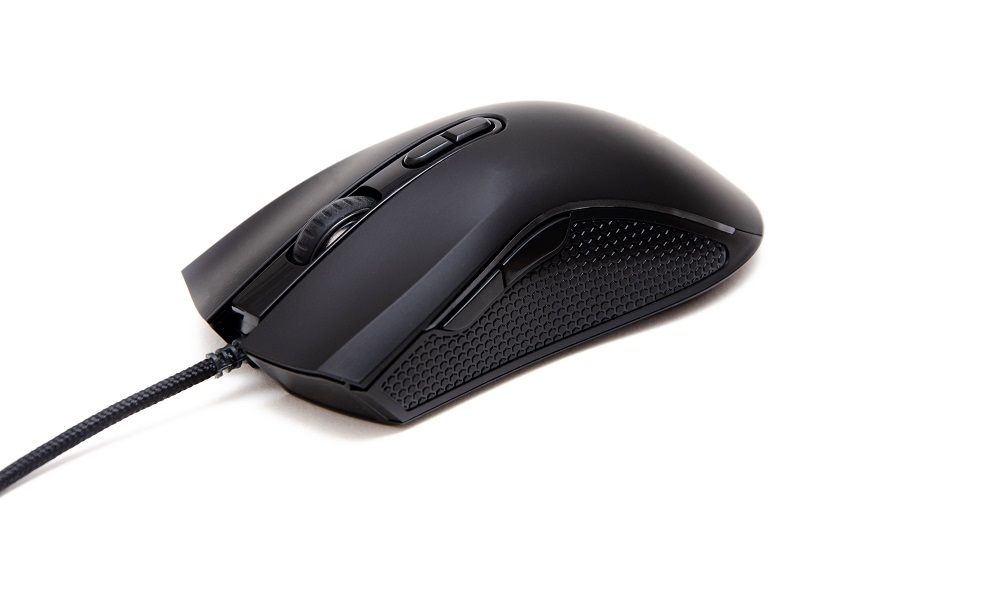
Gaming is one of the more demanding applications for a mouse, requiring excellent responsiveness and accuracy, as well as offering a high level of comfort. Gaming mice are available in wired and wireless versions, but where they really differ is in the number of buttons available.
Not only do they have more buttons (e.g. seven), but buttons can be programmed to perform specific actions depending on the game. Many also come with special effects, like LED backlighting.
Apple Magic Mouse
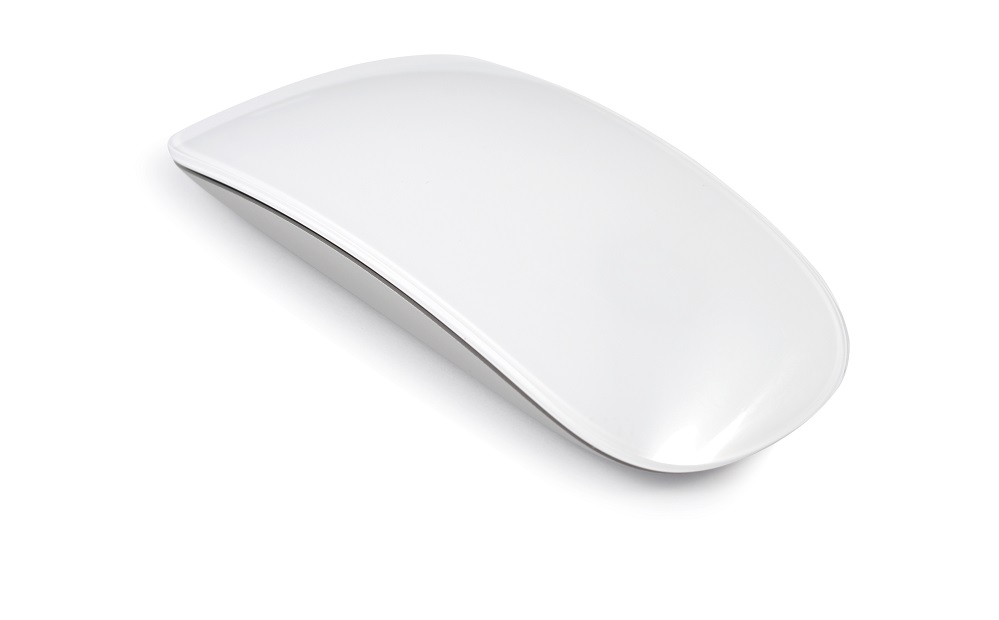
Apple’s Magic Mouse is a laser tracking, Bluetooth connected device, with a difference. The top surface or shell, is a multi-touch sensor, allowing tapping or swiping gestures with the fingers to mimic button clicks and scrolling (similar to the way a touch screen on a smart phone works).
Conclusion
The mouse has become an integral part of any computer system today. There is quite a variety of mice to choose from, wired or wireless, LED or laser, not to mention the array of grips available.
The popular wireless, LED optical mouse found on most desktops is ideal for ordinary, everyday use. For applications requiring greater control and accuracy, wired and/or laser optical mice are recommended. There are also several ergonomic alternatives available for those suffering from repetitive stress injuries.

